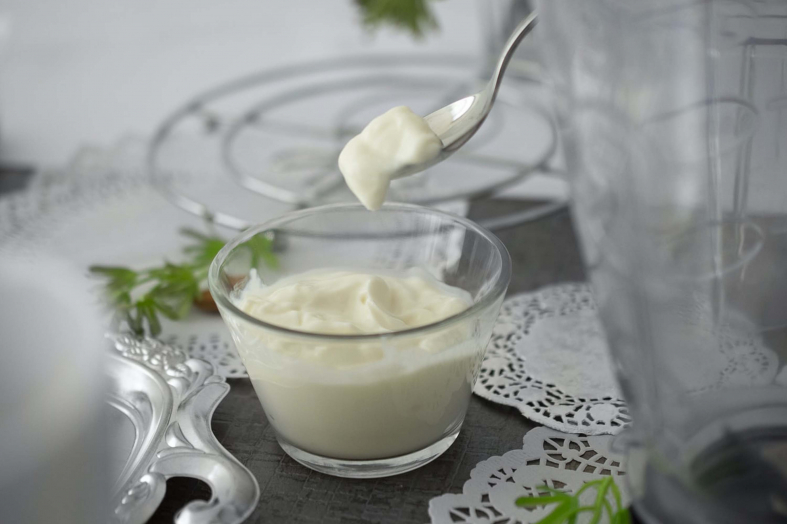Let’s talk about cream of tartar substitutes because, trust me, we’ve all been there. You’re in the middle of baking a masterpiece, and suddenly you realize you’re out of cream of tartar. Panic sets in, but hold up! There are plenty of alternatives that can save the day without compromising your recipe’s flavor or texture. Whether you’re whipping up meringues, baking biscuits, or making homemade Play-Doh, we’ve got you covered.
Cream of tartar might seem like a small ingredient, but it plays a big role in stabilizing egg whites, balancing acidity, and preventing sugar crystallization. But don’t sweat it if you don’t have it on hand. This guide will walk you through the best substitutes for cream of tartar that you probably already have in your pantry.
In this article, we’ll dive deep into what cream of tartar is, why it’s important, and most importantly, how to replace it when you’re in a pinch. So grab a cup of coffee (or tea, no judgment here), and let’s get into it. Your next baking adventure is just a scroll away!
Table of Contents
- What is Cream of Tartar?
- Why is Cream of Tartar Important in Baking?
- Best Substitutes for Cream of Tartar
- Lemon Juice: A Zesty Alternative
- White Vinegar: The Acidic Savior
- Baking Powder: A Convenient Swap
- Citric Acid: For the Science Nerds
- Yogurt: A Creamy Solution
- Apple Cider Vinegar: A Natural Option
- Tips for Using Substitutes in Baking
- FAQs About Cream of Tartar Substitutes
What is Cream of Tartar?
Alright, let’s start with the basics. Cream of tartar is a powdery white substance that’s a byproduct of winemaking. It’s basically potassium bitartrate, which forms naturally during the fermentation of grapes. Sounds fancy, right? But here’s the deal—it’s super useful in the kitchen. It acts as an acidifier, stabilizer, and leavening agent, making it a baking MVP.
Cream of tartar is especially popular in recipes where you need to stabilize egg whites, like meringues, or when you want to prevent sugar from crystallizing, like in candy-making. It’s also used in baking powder to activate the leavening process when combined with liquid. So yeah, it’s kind of a big deal.
Why is Cream of Tartar Important in Baking?
Okay, so why do we even need cream of tartar in the first place? Well, it serves a few key purposes:
- Stabilizing egg whites: It helps egg whites whip up into stiff, glossy peaks without collapsing.
- Preventing sugar crystallization: It keeps your candy smooth and silky instead of grainy and gritty.
- Activating baking soda: It reacts with baking soda to create carbon dioxide, which helps baked goods rise.
Without it, your meringues might fall flat, your candy might turn crunchy, and your biscuits might be as dense as a brick. But don’t worry, we’ve got some awesome substitutes coming up!
Best Substitutes for Cream of Tartar
Now that you know why cream of tartar is so important, let’s talk about what you can use instead. Here are the top substitutes that will work wonders in your recipes:
Lemon Juice: A Zesty Alternative
Lemon juice is one of the easiest substitutes for cream of tartar. It’s acidic, which makes it perfect for stabilizing egg whites and activating baking soda. Just keep in mind that it’ll add a citrusy flavor to your dish, so it’s best used in recipes where that flavor won’t overpower the other ingredients.
Pro Tip: Use about 1 tablespoon of lemon juice for every 1 teaspoon of cream of tartar called for in your recipe.
White Vinegar: The Acidic Savior
White vinegar is another great option. Like lemon juice, it’s acidic and will help stabilize egg whites and activate baking soda. However, it doesn’t have the same strong flavor as lemon juice, so it’s a better choice for recipes where you don’t want any additional taste.
Pro Tip: Substitute 1 tablespoon of white vinegar for every 1 teaspoon of cream of tartar.
Baking Powder: A Convenient Swap
If your recipe calls for cream of tartar to activate baking soda, you can skip the whole process and just use baking powder instead. Baking powder already contains cream of tartar, so it’s a one-stop solution. Just remember to adjust the measurements accordingly.
Pro Tip: Replace 1 teaspoon of cream of tartar with 1 ½ teaspoons of baking powder.
Citric Acid: For the Science Nerds
Citric acid is a powerful acidifier that’s often used in food preservation and flavoring. It’s a great substitute for cream of tartar because it has a similar pH level and can perform the same functions in baking. However, it’s not as readily available as some of the other options, so you might need to order it online.
Pro Tip: Use 1 teaspoon of citric acid for every 1 teaspoon of cream of tartar.
Yogurt: A Creamy Solution
Who knew yogurt could be a baking ingredient? Plain yogurt, especially Greek yogurt, is slightly acidic and can be used as a substitute for cream of tartar in certain recipes. It’s a great option for adding moisture and tang to baked goods.
Pro Tip: Replace 1 teaspoon of cream of tartar with 1 tablespoon of yogurt. Mix it with the dry ingredients to distribute evenly.
Apple Cider Vinegar: A Natural Option
Apple cider vinegar is another acidic substitute that works well in baking. It has a milder flavor than white vinegar and can add a subtle sweetness to your recipes. Plus, it’s packed with health benefits, so it’s a win-win!
Pro Tip: Use 1 tablespoon of apple cider vinegar for every 1 teaspoon of cream of tartar.
Tips for Using Substitutes in Baking
Now that you know what you can use instead of cream of tartar, here are a few tips to help you get the best results:
- Start with small amounts: If you’re using a substitute for the first time, start with a smaller amount and adjust as needed.
- Consider the flavor profile: Some substitutes, like lemon juice and apple cider vinegar, will add a distinct flavor to your dish. Make sure it complements the other ingredients.
- Experiment with combinations: Sometimes a mix of substitutes works better than using just one. For example, you could use a combination of lemon juice and baking powder in a recipe.
- Keep notes: Write down what works and what doesn’t so you can refer back to it in the future.
FAQs About Cream of Tartar Substitutes
Can I use baking soda instead of cream of tartar?
Nope, baking soda and cream of tartar are not interchangeable. Baking soda is a base, while cream of tartar is an acid. They work together in baking powder to create a leavening effect. If you need to replace cream of tartar, use one of the substitutes mentioned above.
Is cream of tartar the same as baking powder?
Not exactly. Baking powder contains cream of tartar, but it also includes baking soda and a drying agent. You can use baking powder as a substitute for cream of tartar, but you’ll need to adjust the measurements.
Can I skip cream of tartar altogether?
It depends on the recipe. If cream of tartar is used for stabilizing egg whites or preventing sugar crystallization, skipping it might affect the texture of your final product. However, if it’s just used to activate baking soda, you can try using baking powder instead.
Where can I buy cream of tartar?
Cream of tartar is usually found in the spice aisle of most grocery stores. You can also order it online from retailers like Amazon or Walmart. It’s inexpensive and has a long shelf life, so it’s worth keeping a small container in your pantry.
Kesimpulan
So there you have it—your ultimate guide to cream of tartar substitutes! Whether you’re using lemon juice, white vinegar, or baking powder, you can still achieve great results in your baking adventures. Just remember to consider the flavor profile and adjust the measurements accordingly.
Now it’s your turn! Have you tried any of these substitutes before? Which one is your favorite? Let us know in the comments below. And don’t forget to share this article with your fellow bakers who might be in need of a little kitchen inspiration. Happy baking, y’all!


:max_bytes(150000):strip_icc()/Cream-Of-Tartar-Substitute-4x3-3e291ce9226843b4acbf3fae38931e08.jpg)